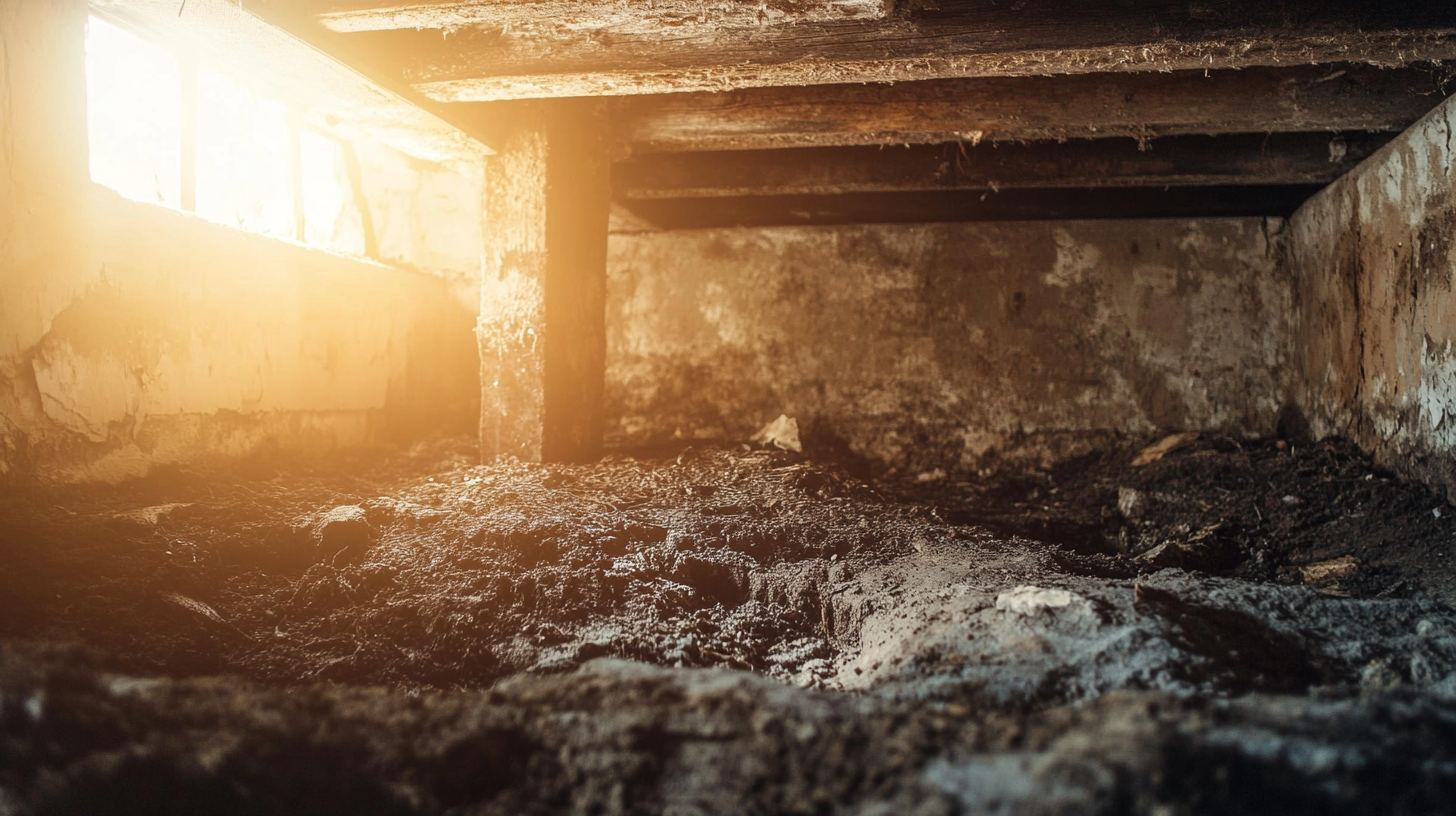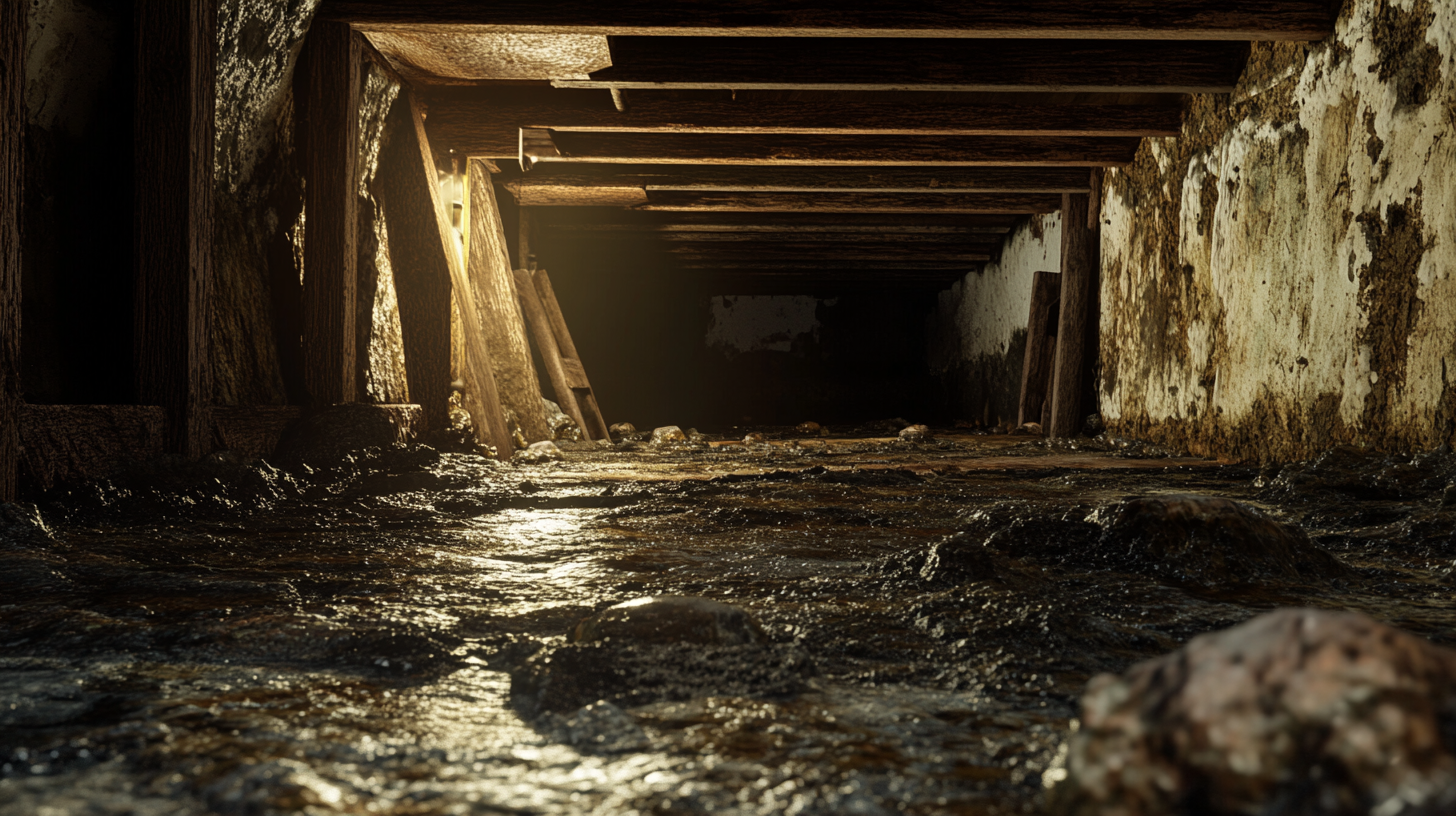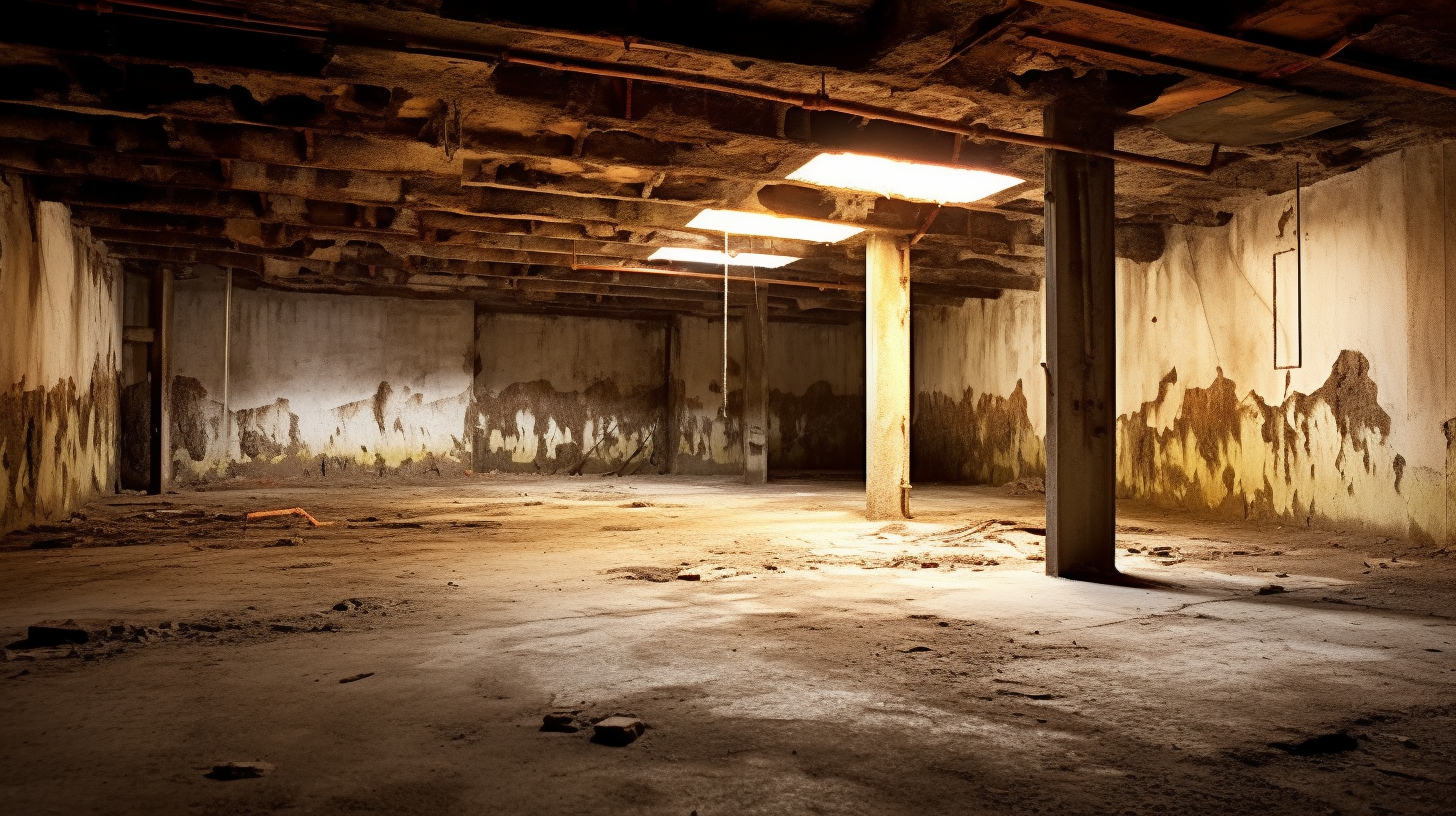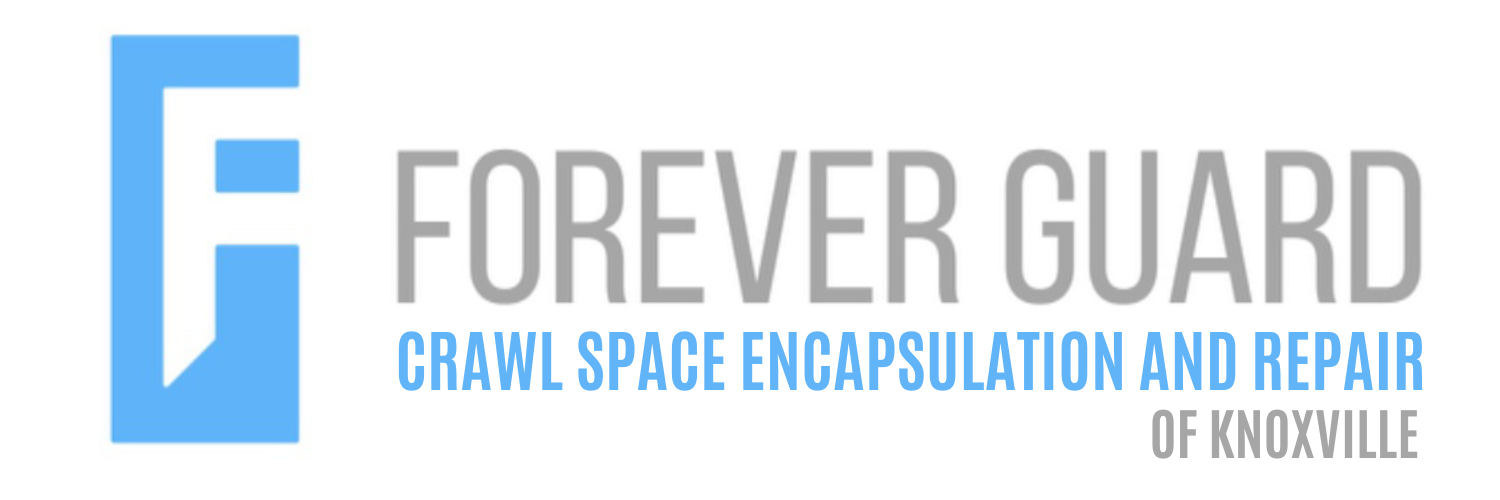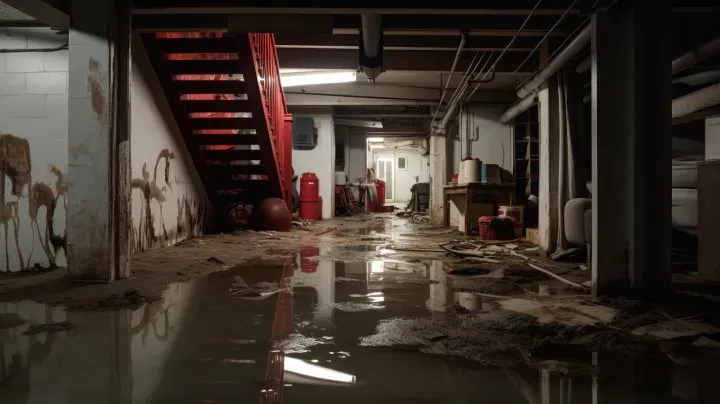Now IS THe Time To...

Crawl Space Services In Knoxville, TN
Stetson Howard: 865-432-6743
CRAWL SPACE ENCAPSULATION, REPAIR, WATERPROOFING & MOLD REMOVAL
No-Obligation, Free Inspections
No-Obligation Free Estimates
We Warranty All of Our Work
100% Satisfaction Guaranteed
Welcome to our insightful exploration into the often-overlooked relationship between waterproofing and energy efficiency in buildings. This blog delves into the intricate ways these two crucial aspects of building design and maintenance are interconnected, highlighting the significant role waterproofing plays in enhancing a building's energy conservation.
Understanding the Symbiosis of Waterproofing and Energy Efficiency
At first glance, waterproofing and energy efficiency might seem like distinct facets of building management. However, they are deeply intertwined, each influencing the effectiveness of the other. Proper waterproofing is not just about keeping water out; it's also about creating an envelope that aids in maintaining optimal indoor temperatures and reducing energy consumption.
How Waterproofing Contributes to Energy Conservation
Waterproofing contributes to energy conservation in several key ways:
Thermal Regulation: By preventing moisture penetration, waterproofing materials help maintain consistent indoor temperatures, reducing the load on heating and cooling systems.
Preventing Heat Loss: Moisture in building materials can lead to significant heat loss. Effective waterproofing minimizes this, enhancing the building's overall thermal efficiency.
Protecting Insulation: Waterproofing preserves the effectiveness of insulation materials by preventing water damage, which can compromise insulation and lead to increased energy usage.
In this blog, we will explore the various dimensions of how waterproofing directly impacts a building's energy efficiency. From the basics of waterproofing techniques to advanced insights into energy conservation strategies, we aim to provide a comprehensive understanding of this vital synergy.
Join us as we unravel the critical connection between waterproofing and energy efficiency, emphasizing the importance of integrating these elements to create sustainable, cost-effective, and energy-efficient buildings.
The Role of Waterproofing in Energy Efficiency
Waterproofing plays a pivotal role in enhancing the energy efficiency of buildings. It goes beyond just keeping water out; it significantly impacts the building's thermal performance and energy consumption. This section will delve into the basics of how waterproofing affects thermal performance, explore the science behind moisture control and energy loss, and highlight the benefits of waterproofing for energy conservation.
Understanding the Basics
Explanation of How Waterproofing Impacts a Building's Thermal Performance
Effective waterproofing is integral to maintaining a building's thermal envelope:
- Moisture and Heat Transfer: Moisture in building materials can increase heat transfer, leading to higher energy consumption for heating or cooling.
- Waterproofing Materials: These materials help in creating a continuous barrier that minimizes uncontrolled air and moisture infiltration, thereby stabilizing indoor temperatures.
The Science Behind Moisture Control and Energy Loss
- Thermal Conductivity: Wet materials have higher thermal conductivity than dry materials, meaning they transfer heat more readily, which can lead to increased energy loss.
- Insulation Efficiency: Moisture can degrade the performance of insulation materials, reducing their effectiveness in preventing heat loss.
Benefits of Waterproofing for Energy Conservation
Detailed Benefits Including Reduced Heat Loss, Prevention of Thermal Bridges, and Improved HVAC Efficiency
- Reduced Heat Loss: By keeping the building envelope dry, waterproofing reduces heat loss, leading to lower heating costs in colder climates.
- Prevention of Thermal Bridges: Waterproofing helps in eliminating thermal bridges - areas where heat is more readily transferred - which are often exacerbated by moisture.
- Improved HVAC Efficiency: A well-waterproofed building maintains a more consistent internal environment, reducing the strain on HVAC systems and thereby improving their efficiency and lifespan.
Additional Benefits
- Mold and Mildew Prevention: By controlling moisture, waterproofing also prevents mold and mildew growth, which can affect air quality and the health of occupants.
- Long-Term Structural Integrity: Waterproofing preserves the structural integrity of the building, which can be compromised by prolonged exposure to moisture.
Waterproofing Materials and Energy Efficiency
The choice of waterproofing materials can significantly impact a building's energy efficiency. Modern advancements have led to the development of materials that not only provide robust waterproofing but also contribute to insulation and energy conservation. This section will introduce energy-efficient waterproofing materials, compare them with traditional options, and discuss sustainable and eco-friendly waterproofing solutions.
Energy-Efficient Waterproofing Materials
Introduction of Materials That Offer Both Waterproofing and Insulation Properties
Several innovative materials combine waterproofing with energy-saving benefits:
- Insulating Coatings: These are special coatings that provide a waterproof barrier and also have insulating properties, helping to reduce heat transfer.
- Reflective Membranes: Some waterproofing membranes are designed to reflect sunlight and heat, thereby reducing cooling costs in warmer climates.
Comparison of Traditional vs. Advanced Materials in Terms of Energy Efficiency
- Traditional Materials: Conventional waterproofing materials like asphalt-based coatings and standard membranes primarily focus on moisture prevention without energy considerations.
- Advanced Materials: Newer materials not only prevent water ingress but also contribute to thermal regulation, offering a dual benefit of waterproofing and energy efficiency.
Sustainable and Eco-Friendly Options
Discussion on Eco-Friendly Waterproofing Materials That Enhance Energy Efficiency
Eco-friendly waterproofing materials are gaining popularity for their environmental and energy benefits:
- Green Roof Systems: These systems involve a layer of vegetation over a waterproof membrane, providing insulation and reducing heat absorption.
- Recycled and Bio-Based Materials: Waterproofing products made from recycled or natural materials reduce environmental impact and often have better thermal performance.
Benefits of Using Sustainable Materials for the Environment and Energy Bills
- Reduced Environmental Footprint: Sustainable materials often have a lower carbon footprint in their production and disposal.
- Energy Bill Savings: By improving insulation and reducing heat transfer, these materials can lead to significant savings on energy bills.
- Long-Term Sustainability: Using eco-friendly waterproofing materials contributes to the overall sustainability of the building, aligning with green building practices.
Waterproofing Techniques for Enhanced Energy Efficiency
Waterproofing is not only essential for protecting buildings from water damage but also plays a significant role in enhancing energy efficiency. This section will explore how exterior waterproofing techniques can improve insulation and reduce energy costs, with real-world examples, and discuss the role of interior waterproofing in maintaining stable indoor temperatures, along with tips for maximizing energy efficiency.
Exterior Waterproofing and Insulation
How Exterior Waterproofing Techniques Can Improve Insulation and Reduce Energy Costs
Exterior waterproofing has a direct impact on a building's thermal performance:
- Barrier Against Heat Loss: Waterproofing materials on the exterior act as an additional layer of insulation, reducing heat loss in colder climates.
- Reflective Properties: Some waterproofing materials have reflective properties that can deflect sunlight and reduce cooling costs in warmer climates.
Case Studies or Examples of Effective Exterior Waterproofing for Energy Efficiency
- Green Roof Installations: Case studies of buildings with green roofs, which provide waterproofing and insulation, showing how they contribute to reduced energy consumption.
- Insulated Waterproofing Membranes: Examples of buildings that have used advanced waterproofing membranes with insulating properties, demonstrating their impact on energy savings.
Interior Waterproofing Considerations
The Role of Interior Waterproofing in Maintaining a Stable Indoor Temperature
Interior waterproofing also contributes to energy efficiency:
- Moisture Control: By preventing moisture ingress, interior waterproofing helps maintain consistent humidity levels, which is crucial for efficient heating and cooling.
- Enhancing Insulation Effectiveness: Waterproofing materials used inside, like coatings or sealants, can complement existing insulation, reducing the thermal conductivity of walls and floors.
Tips for Maximizing Energy Efficiency with Interior Waterproofing Solutions
- Seal Cracks and Gaps: Ensure that all cracks and gaps are sealed to prevent drafts and moisture ingress, which can affect indoor temperatures.
- Use Insulating Waterproof Paints: Consider using waterproof paints with insulating properties for interior walls and basements.
- Regular Maintenance: Keep interior waterproofing systems well-maintained to ensure their continued effectiveness in energy conservation.
Waterproofing in Different Climates
The effectiveness of waterproofing is significantly influenced by climatic conditions. Different climates pose unique challenges and require tailored waterproofing strategies to ensure both the integrity of the structure and optimal energy efficiency. This section will explore how to adapt waterproofing methods for various climates and provide seasonal maintenance tips.
Tailoring Waterproofing for Climate
Adapting Waterproofing Methods to Suit Various Climatic Conditions for Optimal Energy Efficiency
The approach to waterproofing should be customized based on the climate:
- Cold Climates: In areas with freezing temperatures, waterproofing materials need to be resistant to ice and snow. Insulating properties are also crucial to prevent heat loss.
- Temperate Climates: These regions require versatile waterproofing that can handle a range of weather conditions, from rain to moderate heat.
- Hot Climates: In hot and possibly humid areas, waterproofing materials should be able to withstand high temperatures and UV radiation, with reflective properties to aid in cooling.
Considerations for Cold, Temperate, and Hot Climates
- Material Durability: Choose materials that can withstand the specific environmental stresses of each climate.
- Energy Efficiency: Consider how waterproofing can contribute to energy savings, such as using reflective coatings in hot climates to reduce cooling needs.
Seasonal Waterproofing Maintenance
Seasonal Maintenance Tips to Ensure Both Waterproofing Integrity and Energy Efficiency
Regular maintenance is key to the longevity and effectiveness of waterproofing:
- Spring: Inspect and repair any damage caused by winter weather. Prepare for spring rains by ensuring that drainage systems are clear.
- Summer: Check for UV damage to exterior waterproofing and perform necessary repairs. In hot climates, ensure that reflective coatings are intact.
- Fall: Prepare for colder weather by checking insulation and ensuring that waterproofing is intact to prevent heat loss.
- Winter: In cold climates, monitor for ice dams and snow accumulation that can affect roof waterproofing.
Preparing for Extreme Weather Conditions
- Regular Inspections: Before and after extreme weather events, inspect your waterproofing systems for any signs of damage or wear.
- Emergency Preparedness: Have a plan in place for quick repairs or reinforcements in case of severe weather warnings.
Technological Advances in Waterproofing for Energy Efficiency
The field of waterproofing is rapidly evolving, with technological advances not only enhancing the effectiveness of waterproofing methods but also contributing significantly to energy efficiency. This section will explore innovative waterproofing technologies, potential future trends, and how these advancements can be integrated with smart home systems for superior energy management.
Innovative Waterproofing Technologies
Exploration of New Technologies in Waterproofing That Contribute to Energy Efficiency
Recent innovations in waterproofing technology offer exciting possibilities:
- Smart Membranes: These advanced membranes can adapt to environmental conditions, offering optimal waterproofing while contributing to thermal regulation.
- Reflective Coatings: New formulations in reflective coatings can significantly reduce heat absorption in buildings, leading to lower cooling costs in warmer climates.
- Insulating Waterproof Materials: Developments in materials that combine waterproofing with insulation properties help in maintaining consistent indoor temperatures and reducing energy usage.
Potential Future Trends and Their Impact on Energy Conservation
- Self-Healing Materials: Research is ongoing into materials that can self-repair minor damages, potentially increasing the lifespan and effectiveness of waterproofing.
- Eco-Friendly Materials: Future trends may include more sustainable materials that not only protect buildings from water but also have a lower environmental impact.
Integration with Smart Home Systems
Discussing How Waterproofing Can Be Integrated with Smart Home Technology for Enhanced Energy Management
The integration of waterproofing with smart home technology represents a significant advancement:
- Sensor-Based Systems: Incorporating sensors into waterproofing systems can provide real-time data on moisture levels, alerting homeowners to potential issues before they become serious.
- Automated Responses: Smart waterproofing systems can be programmed to respond automatically to changing weather conditions, optimizing energy efficiency.
Examples of Smart Waterproofing Solutions
- Smart Leak Detection Systems: These systems can detect and alert homeowners to leaks, often integrating with home automation systems to shut off water supply in case of a detected leak.
- Climate-Responsive Membranes: Membranes that adjust their properties based on temperature and humidity can be linked to smart home systems, contributing to a building's overall energy management strategy.
FAQs
Recent Blog Posts
Crawl Space News
